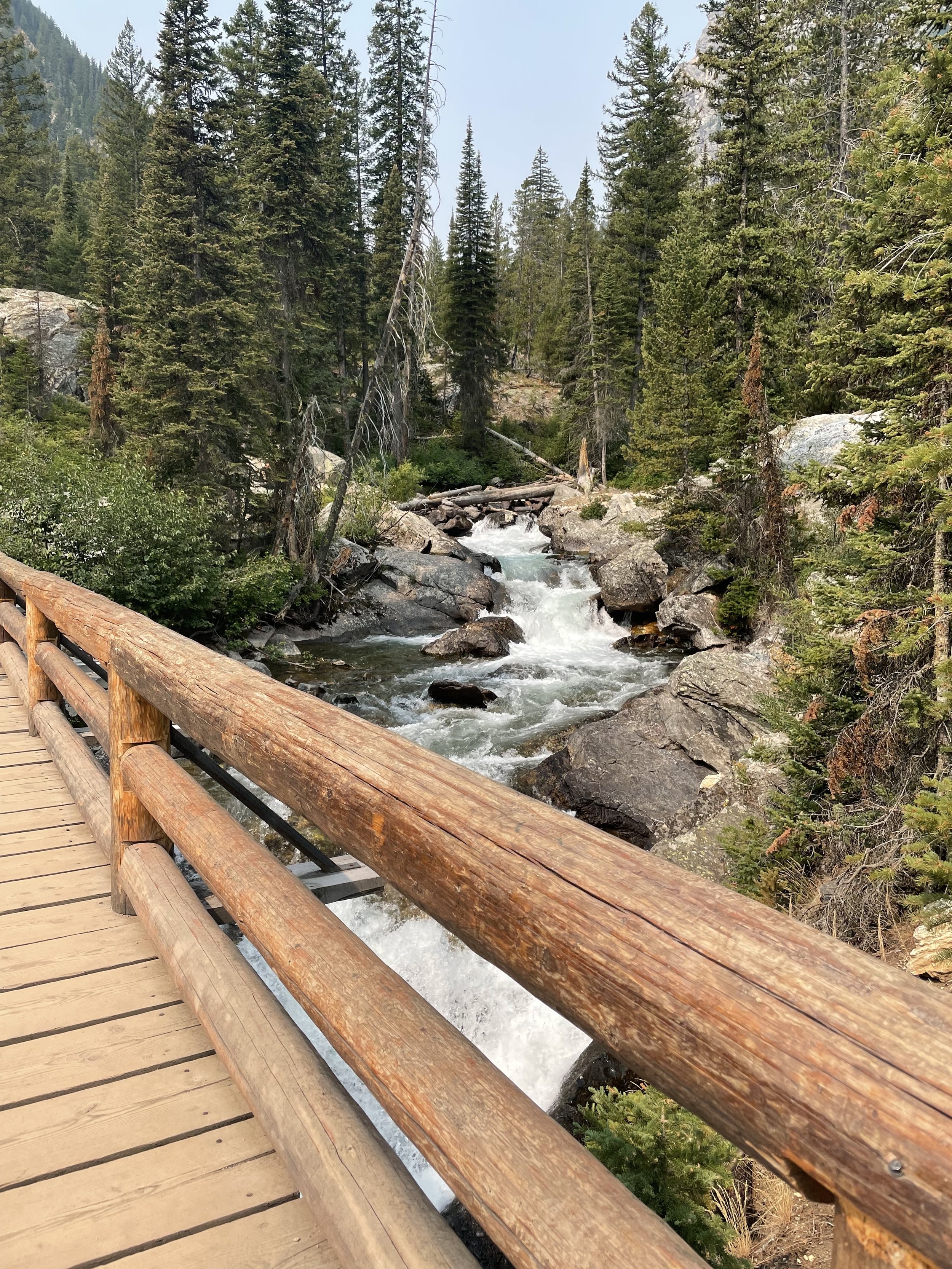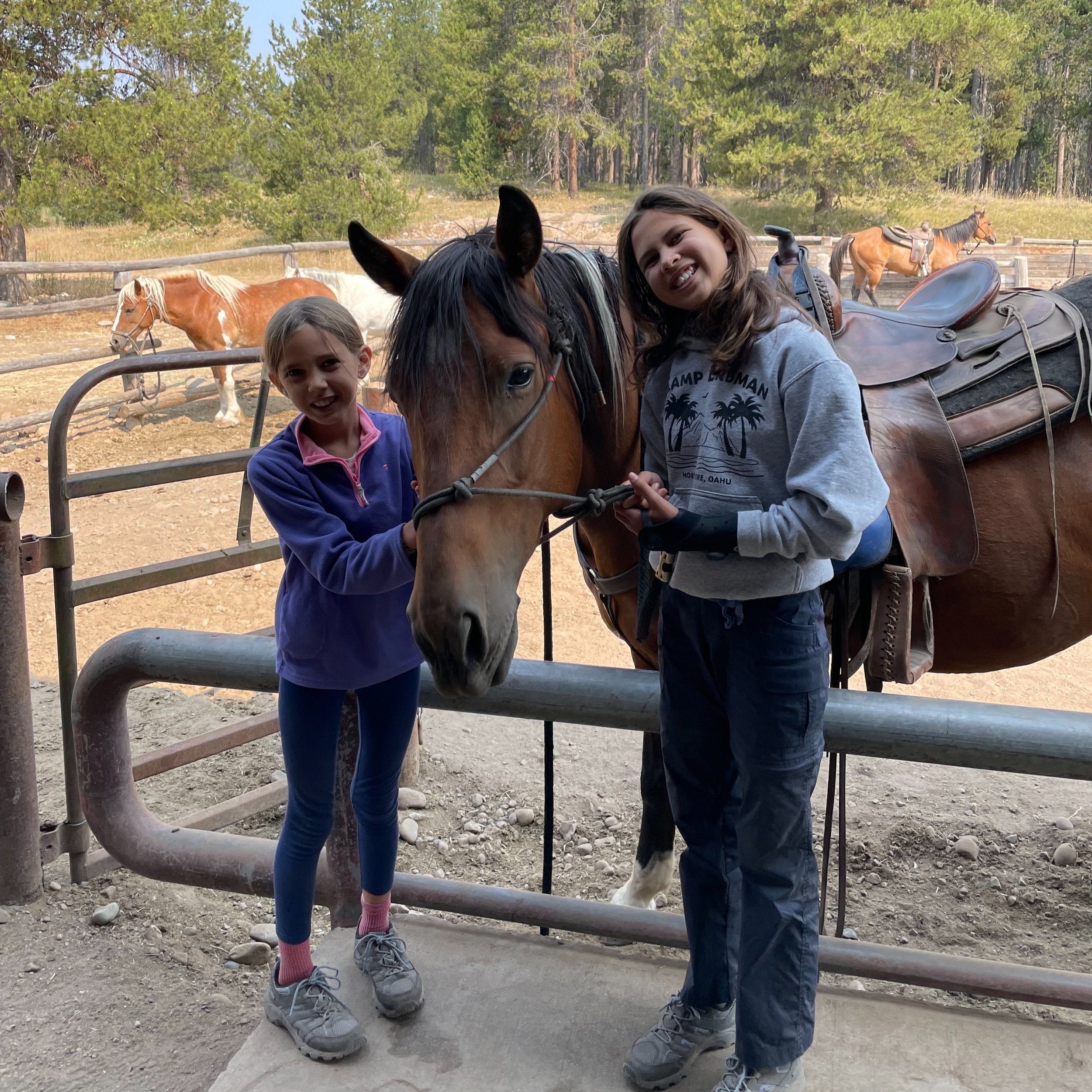Grand Teton National Park
Before our trip we had the great fortune to chat with David Kroese, who has visited all 423 units of the National Park System, most of which are documented in his book The Centennial: A Journey through America’s National Park System. Having someone like David look over your itinerary is like getting the professor’s answer key before you take the exam. His top advice for the entire trip was for Grand Teton, and it was simple: “Don’t ignore the canyons!” We listened, and we were very grateful.
Grand Teton is sometime overshadowed by Yellowstone, its larger, older, more famous neighbor, just 14 miles to the north. The two national parks are connected by the John D. Rockefeller Jr. Memorial Parkway — another of the 423 NPS units. But Grand Teton holds its own against even the mighty Yellowstone with gorgeous flora and fauna, pristine lakes and streams, significant human history, and, of course, the domineering Tetons themselves.
We entered during twilight via Moran. We didn’t actually pass through a park gate for the first 24 hours, as the eastern half of Grand Teton is outside the gates. Still, in this area along the US Highway 191, visitors can enjoy some of the park’s most famous attractions, campgrounds, hikes, and animals.
We pulled to the side of the road to watch the sunset over the Tetons, which was made that much more striking by the wildfire smoke that dominated the skies for the duration of our visit. Just a mile or two down the road, we had our first encounter with a bison heard — perhaps the beasts most associated with national parks in the Northern Rockies. These megafauna are profoundly beautiful in their size and strength, while remarkably accessible to visitors. At this first stop, dozens of cars were pulled over admiring these huge mammals as they grazed. We also spotted elk and pronghorn antelope along the way.
The Teton Range at Sunset
We made camp and had dinner after dark at Gros Ventre, where we’d stay for just one night. We wanted to be on the southern end of the park to allow an early start for the Phelps Lake hike. Parking can be challenging at the Laurance S. Rockefeller Preserve, where the Phelps Lake trail begins. We arrived before 8am and got one of just a few remaining spots.
The 7.0-miles Phelps Lake loop hike was phenomenal. It’s mostly flat, and offers striking views of the Tetons from all side of the lake, which itself is clear, placid, and breathtakingly reflective. Going clockwise, at about 2.2 miles we found the “jumping rock,” where daring people can leap from about 25 feet into crystal clear 50 degree water. Claire was recovering from a broken arm, so we passed on the jump, but stayed for awhile to enjoy the show from those who were willing to take the plunge.
Phelps Lake
Perhaps the biggest surprise around Phelps Lake was the prevalence of butterflies. Simply hundreds and hundreds of butterflies, especially on the northern side of the lake. It was truly magical, if unexpected.
Phelps Lake Loop Trail
Further around, Huckleberry Point lives up to its name with thousands of huckleberry bushes bearing ripe, ready-to-eat berries. For those that haven’t enjoyed this wild delicacy, huckleberries taste like smaller, sweeter blueberries. They are a special treat, because they have never been cultivated domestically, and therefore are only found through foraging.
After lunch and a stroll around the town of Jackson, we began our photo op tour, hitting a number of famous sites from which to snap a picture of the majestic Tetons. Moulton Barn on Morman Row may be the most well known and most photographed. Unfortunately, our vistas were somewhat obscured by the wildfire smoke — apparently blowing in all the way from Oregon. It was a reminder of the impacts that climate change have on these amazing natural places, and, in fact, it left us wondering if smokey summer days would be more common than clear days in many of our national parks in the future.
John Moulton Barn
We dropped in at Glacier View, Schwarbacher Landing, and the Snake River Overlook — where we tried our best to replicate the famous works of Ansel Adams taken from this very spot. The pictures were good, but not what they could have been without the smoke.
Snake River Overlook
After another, closer, run in with the bison heard near Moran, we proceeded to our new camp at Colter Bay Village.
Our second full day at Grand Teton took us to Jenny Lake and Cascade Canyon. The guidebooks will tell you not to miss Hidden Falls and Inspiration Point. After a 45 minute wait and a 20 minute boat ride, we proceeded on a crowded, one-mile, single-file trail to a beautiful waterfall and a decent vista of Jenny Lake. The truth is they were too crowded to truly enjoy. But when we kept going into the canyon, the crowds diminished substantially and the beauty of the Tetons emerged in full force.
Hidden Falls Trail
Thanks to David for his great advice; we did not ignore the canyons. Across 6.3 total miles, we saw a mother and juvenile moose, a community of pikas, and vistas of the mountains and streams that cannot be explained properly in words. The only advice we’d give to fellow hikers at Grand Teton is: absolutely do not ignore the canyons.
Cascade Canyon
That evening brought our first chance to do laundry and shower — both well earned.
For the morning, we had booked a two hour horseback ride at Colter Bay. The horses provided enough enjoyment for the animal-loving girls. But they were also treated to a close encounter with a pair of endangered trumpeter swans and a signet. Lunch and a quick, cold swim in Jackson Lake at the Colter Bay swimming beach, and we were already wrapping our time at Grand Teton.
Colter Bay Village
Three days was not enough, and we’re certain to be back for more someday soon. But for now, it was on to the grand daddy of all national parks: Yellowstone!








